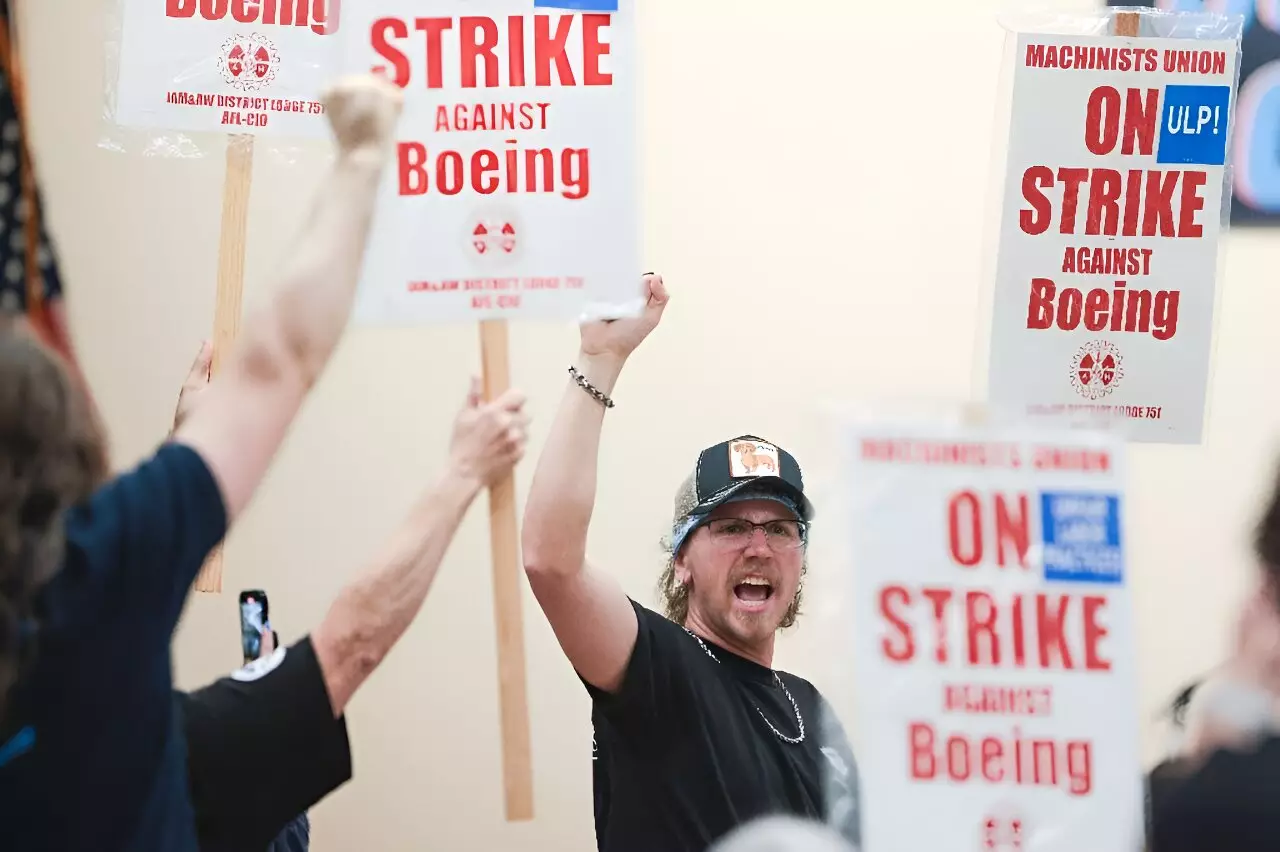The recent labor strike at Boeing marks a significant moment in the aviation giant’s history, as it is the first major walkout in 16 years. Spurred by a breakdown in negotiations over wage increases, over 33,000 workers from the International Association of Machinists (IAM-District 751) in the Seattle region have taken a stand, emphasizing the importance of fair compensation in the face of rising living costs. The fact that 94.6% of workers rejected Boeing’s proposal signals not only discontent with the offered wages but a broader sentiment of frustration with the company’s treatment of its employees following a decade of stagnant salaries.
With talks resuming under the guidance of federal mediators from the Federal Mediation and Conciliation Service (FMCS), the dynamics of this negotiation phase are crucial. The union’s decision to reject Boeing’s contract offer, which proposed a modest 25% wage increase over four years, underscores a gap in expectations. Workers seek not just minimal increases, but a significant adjustment reflective of their contributions and the current economic circumstances. The union’s rhetoric, calling for collective action and solidarity among members, serves both as motivation for striking workers and a message to Boeing that their demands cannot be dismissed.
As the strike unfolds, Boeing’s operations have already felt substantial disruption, particularly at the two key assembly plants for the 737 MAX and 777 aircraft in the Puget Sound area. The financial implications of the strike are significant, especially for a company that has been under pressure to restore profitability following a challenging few years. The delays caused by this labor action could not only harm production timelines but could also have longer-term repercussions on Boeing’s reputation within the industry. Businesses depend heavily on maintaining a stable workforce, and any rupture in that relationship can lead to complications beyond the immediate financial sphere.
This labor action at Boeing is emblematic of a larger trend seen across various sectors where workers are increasingly dissatisfied with the status quo. The willingness of workers to strike, reinforced by social media and a renewed sense of advocacy, reflects an era where labor rights are being re-evaluated in the context of economic disparity. Furthermore, as organizations like IAM-District 751 rally their members with slogans emphasizing the strength of collective action, they manage to draw attention to the disparities workers face in corporate environments.
As the negotiations continue, the outcome will not only determine the immediate future for Boeing employees but may also set a precedent for how labor relations unfold in the aviation industry and beyond. With public sentiment increasingly favoring worker advocacy, Boeing’s leadership may need to rethink their engagement strategies with employees. The resolution of this conflict could pave the way for a more equitable framework where worker contributions are valued, and economic pressures are acknowledged and addressed. The coming days will be pivotal, not only for the employees but also for the broader narrative surrounding labor rights in contemporary society.

